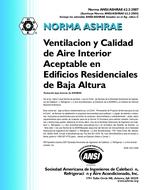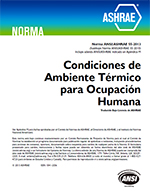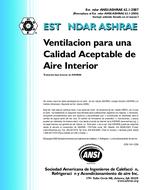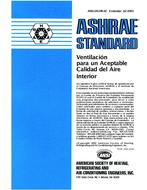Description
Proper distribution of conditioned air plays a major role in both human thermal comfort and indoor air quality. The objectives of this study were (1) to experimentally evaluate airflow conditions around the human body and (2) to characterize the interaction of the thermal plume from the body with the overall room air motion. Environmental conditions around a simulated human body were examined by mapping temperature and velocity distributions around a thermal manikin using modern temperature and velocity instrumentation in an environmental chamber. Results are presented for three test cases: baseline velocity and temperature distribution without manikin, airflow blockage of the unheated manikin, and mixed convection due to interaction of chamber airflow with the heated manikin. Air movement data collected near the thermal manikin demonstrate both the blockage effect of and thermal plumes from the thermal manikin. The unheated thermal manikin exhibited a localized blockage effect to a distance of 0.15 m (6 in.) behind the manikin. The velocity and temperature boundary layer of the thermal manikin expanded further from the body in the mixed convection case than in the unheated blockage case. Near the manikin skin surface, the velocity distribution for mixed convection was primarily dependent on the room air motion and the blockage effect of the manikin and was independent of natural convective effects. The temperature boundary layer was substantially influenced by natural convection below chest level, while at and above chest level, the temperature distribution was affected by room air motion, the blockage effect, and the heating of the manikin. The total power to the heated thermal manikin was set at 164 W (561 Btu/h), to represent a person with a modest activity level (1.5 met). The distribution of the heat loss over the surface of the manikin was determined by the manikin’s heaters and, to a reasonable approximation, represents the heat distribution of a person.
Units: Dual
Citation: Symposium, ASHRAE Transactions, 1998, Vol 104, pt. 1A, San Francisco
Product Details
- Published:
- 1998
- Number of Pages:
- 10
- File Size:
- 1 file , 590 KB
- Product Code(s):
- D-7847




